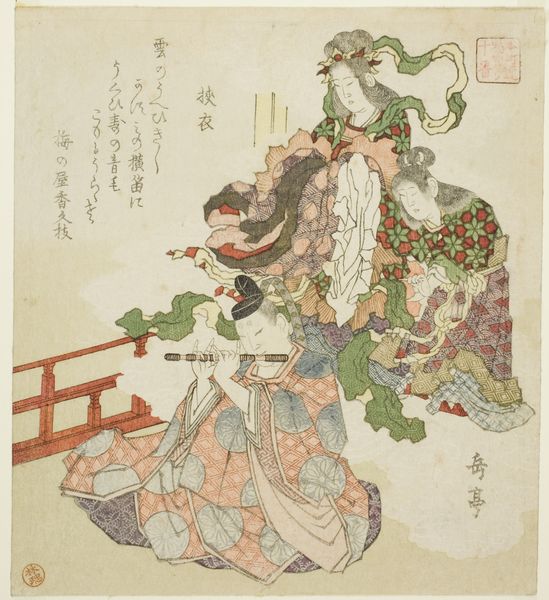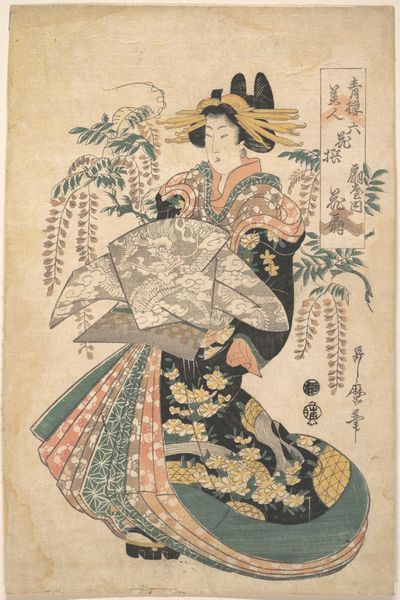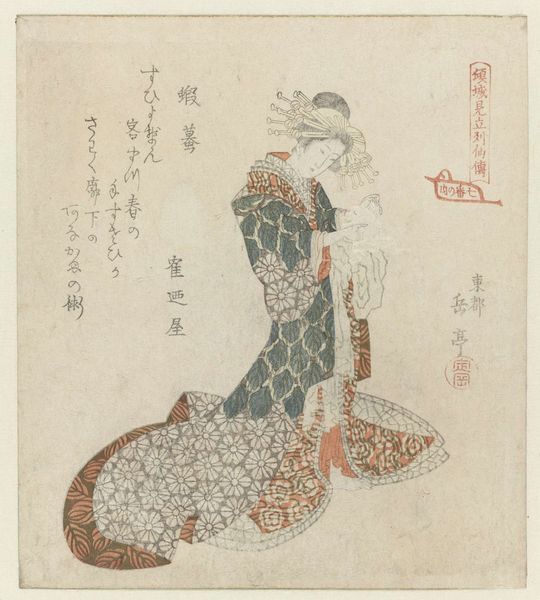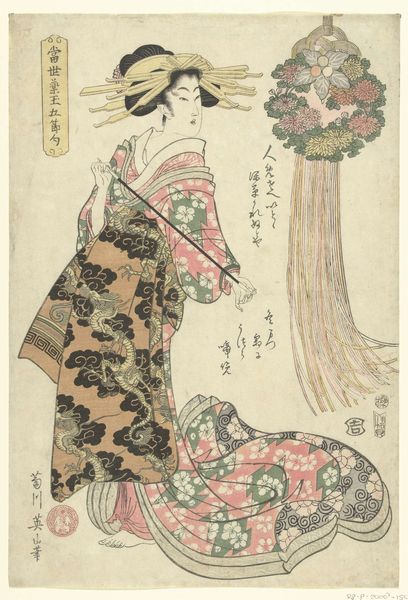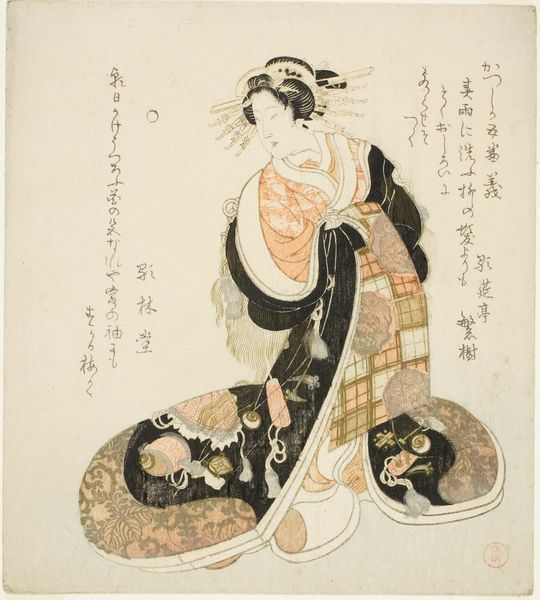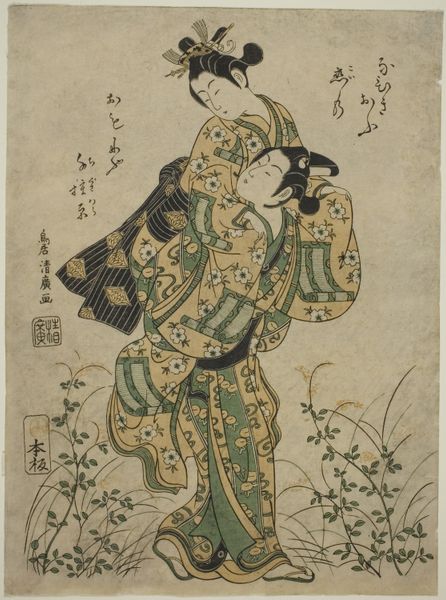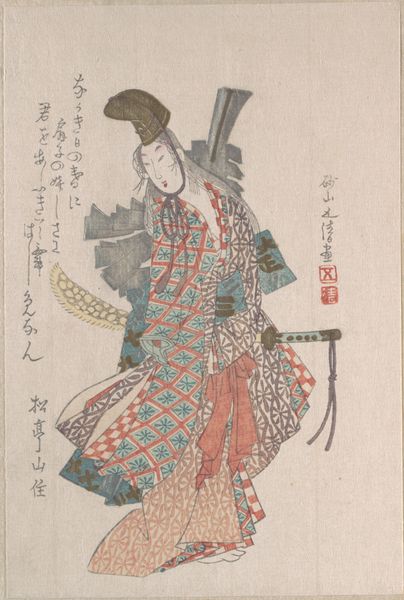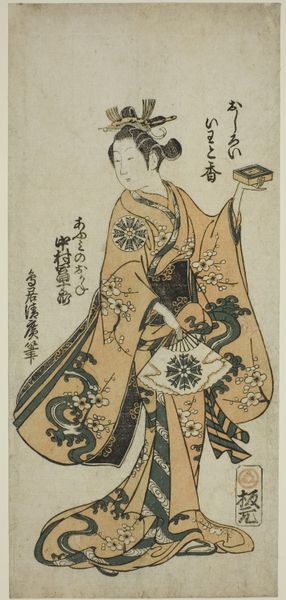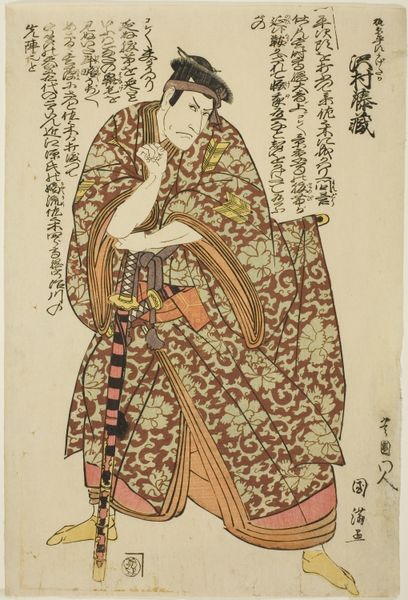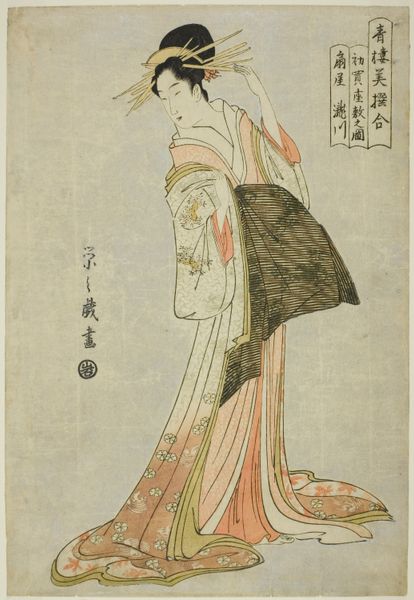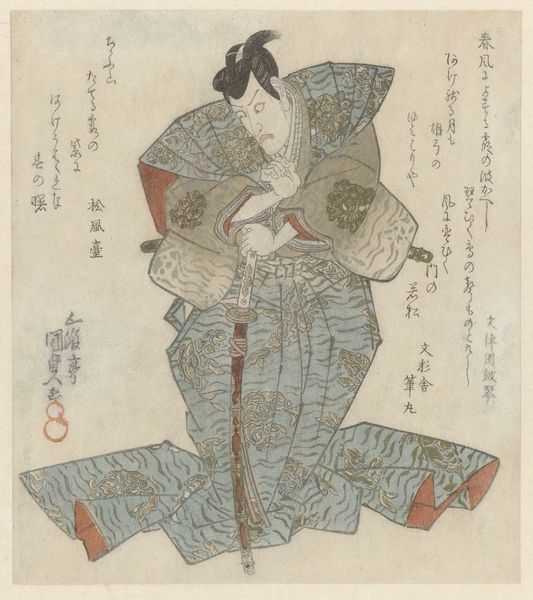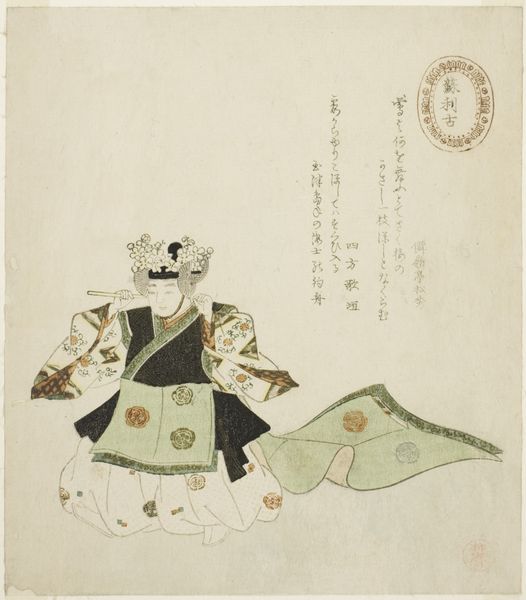
Kyoto: Courtesan of the Shimabara, from an untitled series of the three capitals c. 1820s - 1830s
0:00
0:00
print, etching, textile, woodblock-print
#
portrait
# print
#
etching
#
asian-art
#
textile
#
etching
#
ukiyo-e
#
figuration
#
woodblock-print
Dimensions: 21.5 × 19.3 cm (8 7/16 × 7 5/8)
Copyright: Public Domain
Curator: Let's discuss Yashima Gakutei's print, “Kyoto: Courtesan of the Shimabara, from an untitled series of the three capitals,” which dates from sometime in the 1820s or 30s. Editor: My immediate reaction is one of intricacy and poise. The subtle gradations of color in the textile patterns and the linear quality of the etched lines create a fascinating interplay of textures. Curator: Absolutely. Contextually, we must consider the Shimabara district, one of Kyoto's licensed red-light districts. This print offers a glimpse into the lives of courtesans, who, despite social stigma, held significant cultural influence through their artistic and intellectual pursuits. It provides a lens to explore female agency and societal constraints. Editor: True, but even devoid of that contextual layer, there’s still a masterful study in form. The composition itself is quite compelling: the woman’s seated pose creates a triangular form, lending stability to the overall image, and contrasts beautifully with the circular motifs of her kimono. The headpiece itself is a masterclass of vertical line and shadow. Curator: The text is an important visual element. Her literate depiction challenges prevailing stereotypes. And, while perhaps sentimental, it certainly provides critical insights to gender, class, and artistic patronage of that time period in Japan. These women are the object and subject, if you consider their active participation in social rituals as the artist does in this work. Editor: The restrained palette reinforces a mood of quiet contemplation. The delicate greens, browns, and grays create a harmonious balance and underscore the subject’s contemplative moment. It reminds us that, beyond representation, art relies on aesthetic language to convey emotion. Curator: I see this image and my attention is always directed to the gaze: there’s sadness perhaps, a melancholy recognition. I'm left pondering the lived experiences behind the exquisite façade. Editor: I, too, leave with much to think about. It shows how meticulous arrangement and visual harmony offer a different access point into considering these complex histories.
Comments
No comments
Be the first to comment and join the conversation on the ultimate creative platform.
